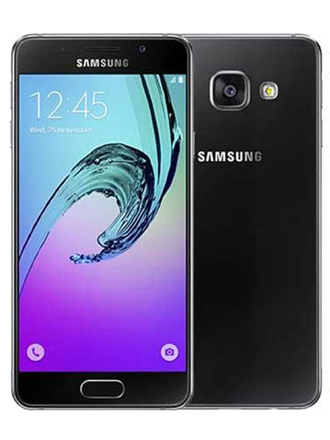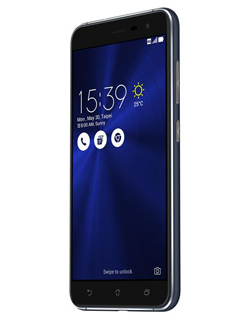Samsung Galaxy A7 (2017) review: Flagship features in an affordable package
Overview
If you asked me for advice about buying a new Android smartphone today, I would tell you that the $600-800 price range is where you should start looking. At this price range, phones like the OnePlus 3T and Xiaomi Mi 5, offer the best bang for your buck, with powerful processors, Full HD displays, premium builds, and high quality rear and front cameras. But with so much competition in this tightly packed segment, what sets one phone apart from the rest?
Samsung thinks it has the answer with its 2017 A series smartphones that it launched in January. Available in two sizes: A7 (5.7-inch) and A5 (5.2-inch) and retailing now for S$648 and S$548 respectively, the freshly updated A range builds on last year's models, with premium metal and glass builds, and octa-core Samsung Exynos processors, but also adds some unique features taken directly from Samsung's flagship 'S' series: an always-on AMOLED display, and an IP68 water resistant build, making these phones the only ones in this price range to boast these features.
But are these additions enough to dethrone OnePlus as the king of the mid-range smartphone? Let's find out.
For this review we'll be looking at the A7 model. The A5 has exactly the same features and hardware, but with a smaller 5.2-inch display.
N.B. The 4.7-inch A3 is also part of the series, but it's not currently available in Singapore.
|
| |
|
| |
|
| |
|
| |
|
| |
|
| |
|
| |
|
| |
|
| |
|
| |
|
| |
|
|
Design

When the Galaxy A series debuted in 2015 it was the first full-metal set of smartphones Samsung had built, and arguably its best looking at that time. Two years later and the latest A series smartphones continue that legacy with a stunning combination of metal and glass that look and feel just as premium as Samsung's top of the line phones. In fact, the thin bezels, metal frame and curved glass back make the A5 and A7 look very similar to Samsung's Galaxy S7. And just like the S7, both the A5 and A7 are IP68 dust and water resistant, meaning they can survive underwater for 30 minutes at depths of up to 1.5m.

This year's A7 has a 5.7-inch display, making it slightly larger than last year's 5.5-inch model. With the demise of the Note7, this also makes the A7 the only 5.7-inch smartphone in Samsung's current lineup. Despite the phone's large size, the curved rear and fairly compact dimensions make it quite comfortable to hold.
Like the S7, below the display there's a physical home button that doubles as a fingerprint sensor. On either side of the home button are backlit navigation keys. Samsung has actually improved the fingerprint sensor since the S7. On the S7, you had to click the Home button once to wake the screen up, then keep your finger on the button to authenticate your fingerprint. For the A7, you just place your finger on the button and the phone wakes up and unlocks at the same time. It's a lot more convenient and saves a bit of time.

Another improvement on the S7's design is the speaker placement. On the S7 it was on the bottom edge, but on the A7 you'll find it on the right-side above the power button. Samsung first experimented with this speaker placement on the J7 Prime. The new speaker position may seem strange, but once you turn the phone into landscape orientation (which you're more likely to do when watching video content) you'll see that it makes perfect sense. In this orientation, you can either position the speaker to fire down or up depending on your preference and there's no risk of covering it up by holding the sides like there was with the previous speaker position.

On the back of the A7 is a 16-megapixel, f/1.9, 27mm rear camera that sits completely flush with the back of the phone. There's a small LED flash module next to it.

Like most of Samsung's phones, the power button is on the right side, and the two volume buttons are on the left side. We like this layout (it's also used by Apple) and find it to be the most ergonomic position to easily reach every button. Below the volume buttons is the first nano-SIM card tray, while on top there's another slot with a second nano-SIM tray and a dedicated microSD card slot that accepts cards up to 256GB in capacity, so you don't have to pick between dual SIM and expandable storage functionality.
On the bottom of the phone is a USB-C port and, thankfully, a 3.5mm headphone jack.

Both the A5 and A7 are available in three colors: Black Sky, Peach Cloud (pink), and Gold Sand. A Blue Mist color is also available, but as usual with blue colors, Samsung hasn't brought it to Singapore yet. Perhaps in the near future?

Display & Audio
The A7 (2017) has a 5.7-inch Full HD 1,920 x 1,080 pixels resolution Super AMOLED display (386ppi). This is lower than the QHD resolution found on Samsung's flagship phones, but pretty standard for phones in this price range. The larger display does result in a lower pixel density, but I found the screen clarity to be sufficient, and it's only when you inspect the display really closely that you start to see any pixels. As with all of Samsung's Super AMOLED displays, colors on the A7 are vivid and life-like, and the contrast is excellent, with deep blacks. As with most phones today, there's a blue light filter option that helps with eye strain when using your device late at night.

A new addition to the A series display is always-on functionality. This feature works exactly like it does on the S7, showing the date, time, and battery percentage when the display is in standby mode. It’s also capable of displaying notifications, which you can double tap to view full screen.

As mentioned above, the speaker has been repositioned to the right corner above the power button. It's not the most powerful speaker, lacking mainly in bass, but it's good enough if you can't be bothered to plug in your headphones or you just want to show your friend a video. If you do plug in some headphones, you can head to the Sound Quality and Effects menu in the Settings app for some advanced options to fine tune your listening experience.
Software
Unfortunately, the A7 (2017) doesn't come with Android 7.0 Nougat out of the box, running instead on the older Android 6.0.1 Marshmallow. Unlike its predecessors, it doesn't run on TouchWiz. Instead, it uses Samsung's new Grace UX, which made a short-lived debut on the Galaxy Note7 last year. The new UI is simpler and cleaner, with more intuitive navigation and fewer gimmicks. Grace UX also uses softer colors and slightly smaller, rounded icons making it a bit easier on the eyes. Animations and transitions are also a lot smoother.

A useful search bar now shows up at the top of the screen when you open the app drawer.

The A7 also sees the return of one of my favorite features from the Note7: Secure Folder. This feature lets you create a protected folder on your phone for storing private files or apps that can only be accessed with your fingerprint or password. This lets you pass your phone to your friend or family member without worrying about them snooping around at your personal photos or e-mails.

Finally, Grace UX has its own theme store, with a pretty good selection of free wallpaper and themes to choose from.

Benchmark Performance
Once again, this year's A series phones use Samsung's own Exynos processors. Both the A5 and A7 use the same Exynos 7880 octa-core 1.9 GHz Cortex-A53 processor and Mali-T830MP3 GPU with 3GB RAM. Historically, Samsung's 7xxx series Exynos processors have been mid-range SoCs, roughly equal to Qualcomm's mid-range 600 series Snapdragon processors. Let's see how it stacks up against other phones of a similar price range:-
|
|
|
| — |
| |
|
|
|
|
| — | |
|
|
|
|
|
| |
|
|
|
|
|
| |
|
|
|
|
|
| |
|
|
|
|
|
| |
|
|
|
|
|
| |
|
|
|
|
|
| |
|
|
|
|
|
| |
|
|
|
|
|
| |
|
|
|
|
|
| |
|
|
|
|
|
|
Sunspider Javascript
SunSpider JavaScript measures the browsing performance of a device when processing JavaScript. It not only takes into consideration the underlying hardware performance, but also assesses how optimized a particular platform is at delivering a high-speed web browsing experience.
The A7 (2017) showed a small increase in performance compared to last year's model, however it still lagged way behind the Qualcomm Snapdragon 821/820 of the OnePlus 3T and Xiaomi Mi 5.

Quadrant
Quadrant is an Android benchmark that evaluates a device's CPU, memory, I/O and 3D graphics performances. The A7 (2017) performed much better than last year's model, but still trailed way behind everything else. The 821-powered OnePlus 3T was the runaway winner here.

3DMark Ice Storm Unlimited
3DMark Ice Storm is designed to test the gaming capabilities of a device, putting its GPU through a rigorous OpenGL ES 2.0 benchmark test that uses fixed off-screen rendering with high quality textures and post-processing effects. The Unlimited version of the benchmark disables v-sync, display scaling and other OS factors, making it ideal for chipset comparison.
The A7 (2017) again struggled in this benchmark, showing a slight improvement over last year's model, but falling behind everything except for the much cheaper Qualcomm Snapdragon 625-powered ASUS ZenFone 3.
Imaging
Samsung has upgraded the rear camera on the A5 and A7 to a 16-megapixel, f/1.9 shooter. Unfortunately, the camera's features are a bit sparse, lacking both phase detection auto focus and optical image stabilization. Video recording was also a bit underwhelming, with no 4K video recording and Full HD recording limited to just 30 FPS. The front camera appears to be the same as the rear and is also 16-megapixels with an f/1.9 aperture. The default Samsung camera app provides quite a few modes with Pro mode with manual controls, Panorama, Hyperlapse, HDR, Night, and Food modes available by default.
The camera isn't bad, but it often takes a few attempts to get a good shot. The auto-focus can also be a bit off sometimes, and a lack of optical image stabilization makes some shots unusable. In low-light conditions, these problems are just exacerbated, and the auto-focus can take forever to lock on.
When you do get a good shot, image quality is quite good with accurate color reproduction and decent contrast. Details in the middle of the frame are sharp, but there is some softness towards the edges.


Battery Life
Our standard battery test for mobile phones has the following parameters:
Looping a 720p video with screen brightness and volume at 100%
Wi-Fi and Bluetooth connectivity turned on
Constant data streaming through email and Twitter
The A7 (2017)'s larger size has let Samsung put a slightly larger 3,600mAh capacity battery inside it (compared to 3,300mAh on last year's model). However, the larger battery wasn't able to fully offset the extra power consumption of the larger display, and the A7 (2017) didn't last as long as its predecessor in our video looping battery benchmark. Having said that, battery life is still very respectable, with the A7 (2017) lasting 14 hours and 45 minutes.

Like last year, the A7 was equipped with Samsung's Fast Adaptive Charging technology, which will get you to about 60% charge in around 30 minutes. Unfortunately, wireless charging is still only available on Samsung's flagship devices.
Conclusion
The Samsung Galaxy A7 (2017) has nearly everything you want from a smartphone: a gorgeous metal and glass build, useful features like an always-on display and an IP68 dust and water resistant build, expandable storage and a long battery life. The only areas where its lacking are benchmark performance and the rear camera.
To be fair, it doesn't make sense for Samsung to make the A7 more powerful than it needs to be (for example, if they put a Qualcomm Snapdragon 821 processor in it) because then there would be no reason to buy a more expensive S series flagship phone. It's also worth thinking about how important benchmark performance really is to you. While high benchmark scores looks great on paper, for most day to day tasks, you don't need actually need such a powerful processor.
Compared to the OnePlus 3T, which is easily the best phone in this price range right now, the S$648 A7 sits closer to the 64GB 3T (~$628) rather than the 128GB 3T (~$728), and if you prefer a smaller display, the S$548 A5 is significantly cheaper. For S$20 more than the 64GB 3T, the A7 offers arguably more useful features. It has expandable storage, an always-on display and an IP68 build. In comparison, the 3T has a much better processor and a moderately better rear camera. Which features are more important to you comes down to personal preference. For most users I would actually recommend the A7 as you'll get more usage out of its features and, unless you do a lot of graphics and processor intensive gaming, you'll rarely need anything as powerful as the Snapdragon 821, and the rear camera on the A7 can still take pretty good pictures.










